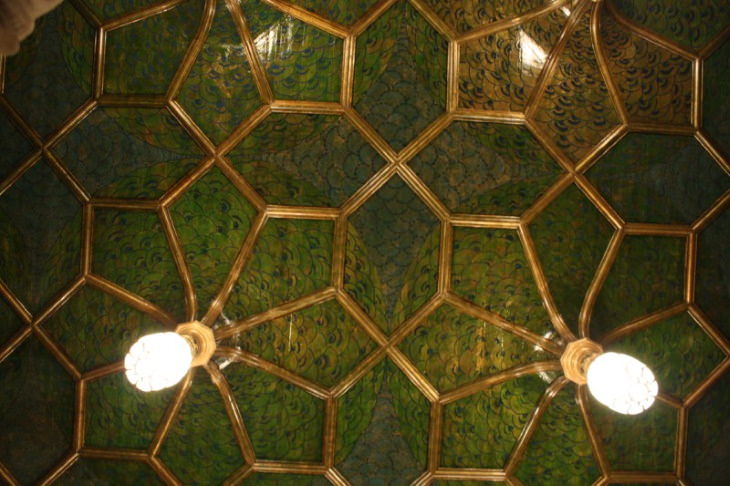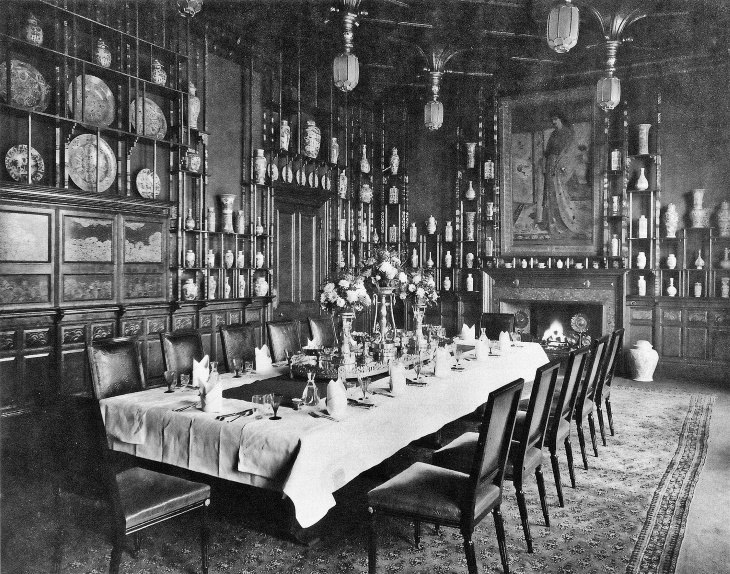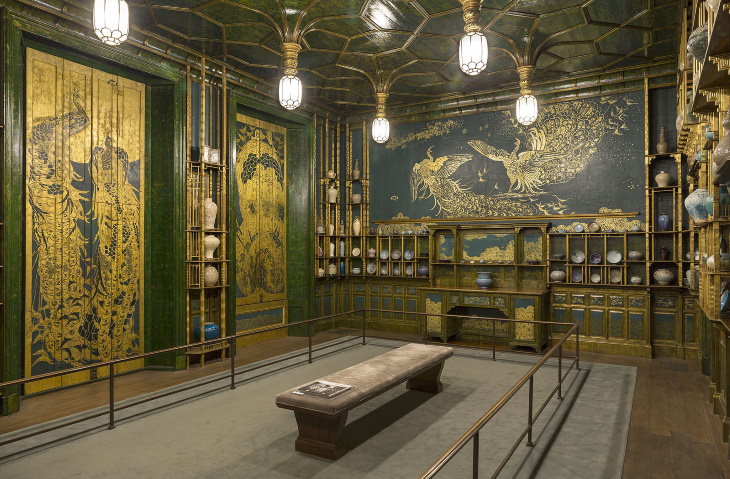
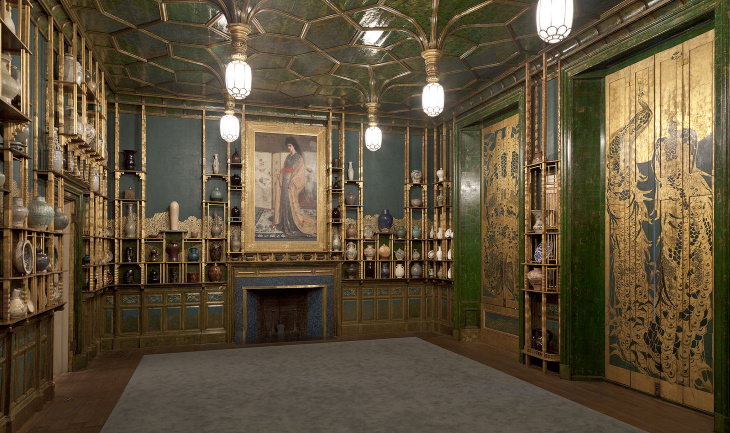
Whistler was not supposed to design the Peacock Room. Originally, the room was conceptualized as a dining room in the London mansion owned by the one Frederick Richards Leyland, which was designed to hold the British magnate’s large collection of Chinese blue and white porcelain from the Kangxi era.
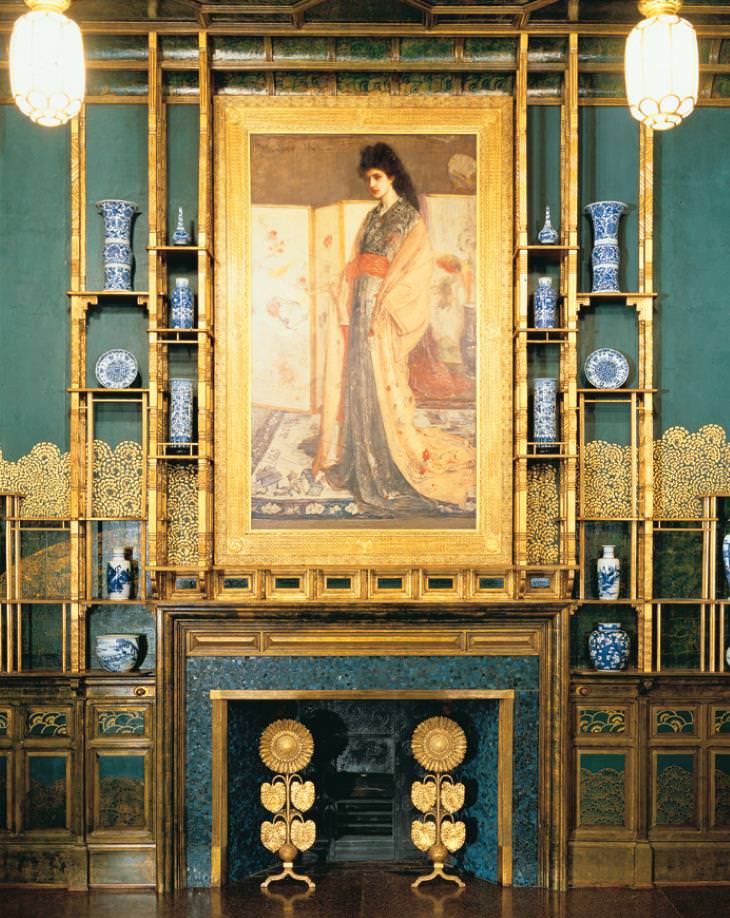
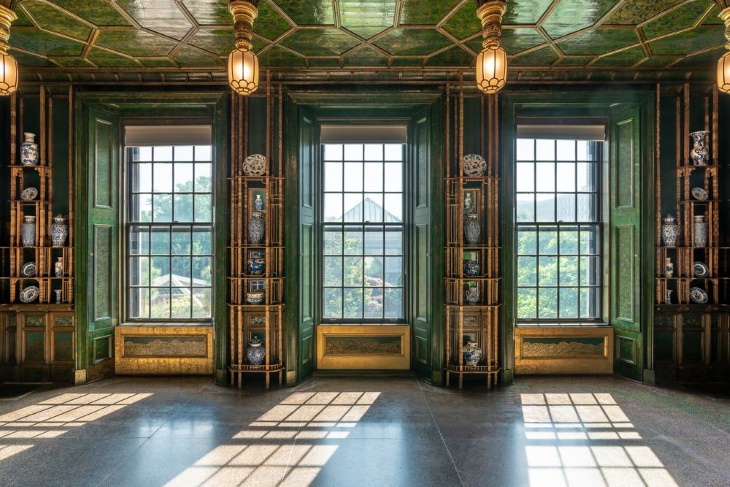
While the American artist was working on the entrance hall of Leyland’s home, Jeckyll nearly finished the dining room but was forced to abandon the project due to illness, and Whistler volunteered to finish the room instead. Whistler was authorized to complete just a few minor alterations - to retouch the leather hangings with yellow paint and embellish the cornices and wainscoting with a golden wave pattern - but he got carried away with his work.
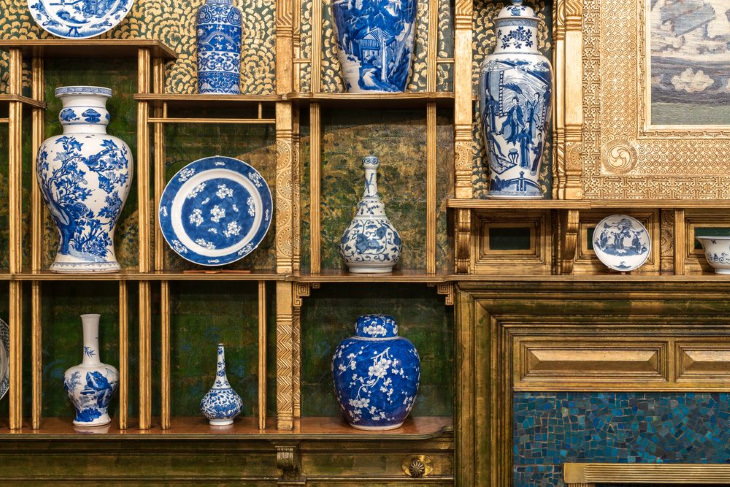
In the artist’s own words, “Well, you know, I just painted on. I went on ―without design or sketch― it grew as I painted. And toward the end, I reached such a point of perfection ―putting in every touch with such freedom― that when I came round to the corner where I started, why, I had to paint part of it over again, as the difference would have been too marked. And the harmony in blue and gold developing, you know, I forgot everything in my joy in it."
As a result, the dining room was completely transformed, with the bright gold and yellow elements creating a contrast against the green and blue base. When Leyland returned from a trip and saw the Peacock Room, he became furious, as he thought that Whistler’s improvements made the room look gaudy and over-the-top.
